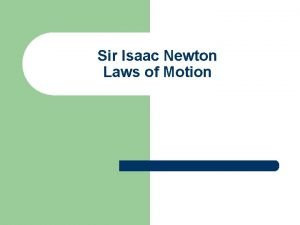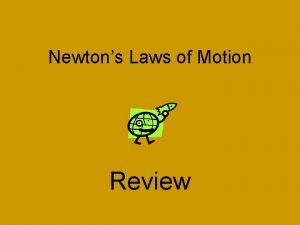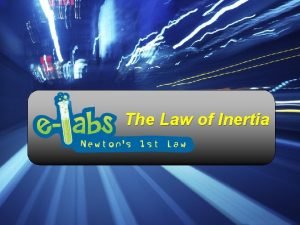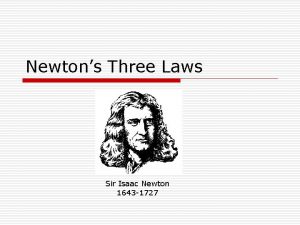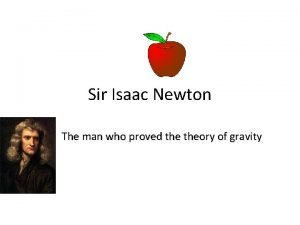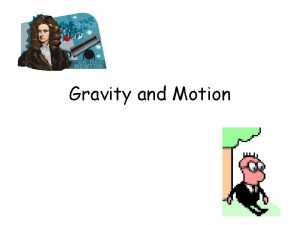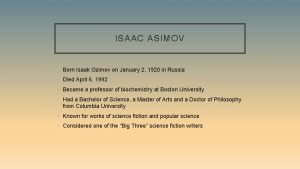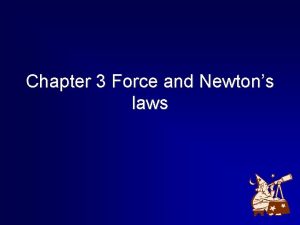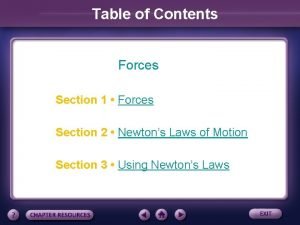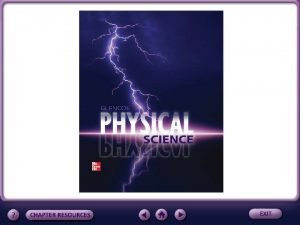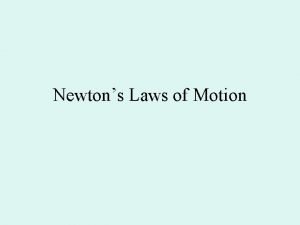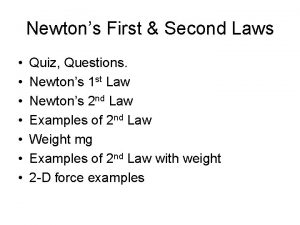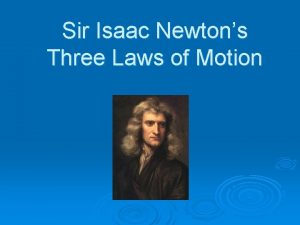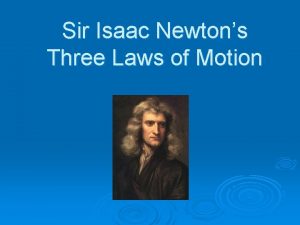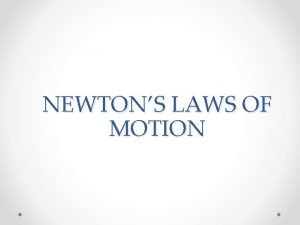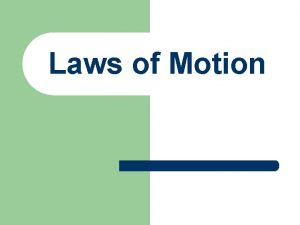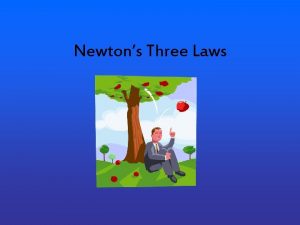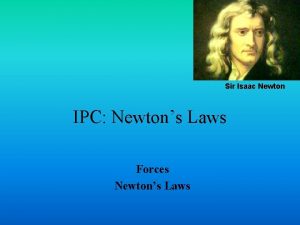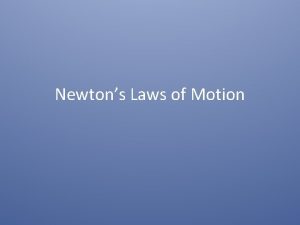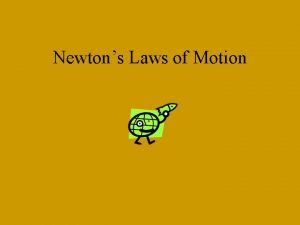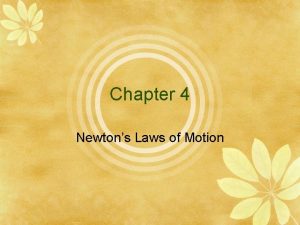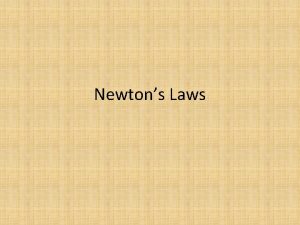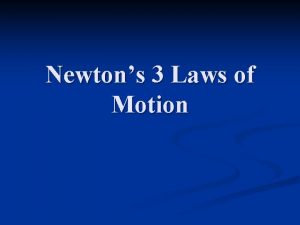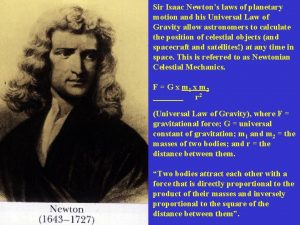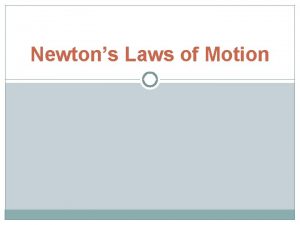Chapter 2 NEWTONS LAWS OF MOTION Sir Isaac



















- Slides: 19

Chapter 2 NEWTON’S LAWS OF MOTION

Sir Isaac Newton (1642 – 1727)

Newton’s First Law of Motion States that an object at rest remains at rest, and an object moving at a constant velocity will continue moving at a constant velocity unless acted on by an unbalanced force. This is also known as The Law of Inertia.


Inertia -the tendency of an object to resist a change in motion. -the more massive an object is, the greater the amount of inertia, and the more difficult it would be to change the object’s motion.

Newton’s Second Law of Motion States that the acceleration of an object depends on the objects mass and the amount of force acting on it.

Acceleration increases when force increases when mass stays constant. Ex. The mass of the two carts is the same, but more force is need to get one cart to experience greater acceleration.

Acceleration decreases as mass increases when using the same amount of force. Ex. With the same force applied, the acceleration of an empty cart is greater than the acceleration of a full cart because the full cart has more mass.

Calculating Force Formula: Force = Mass X acceleration Units: Mass is measured in kg. Acceleration is measured in m/s/s or m/s 2. Force is measured in Newton's. What would be another unit force, based on the equation? Kg- m/s 2 A Newton equals a Kg- m/s 2

Let’s Practice with F=ma

Newton’s Third Law of Motion States that if one object exerts a force on another object, then the second object exerts a force of equal strength in the opposite direction on the first object. All forces act in pairs so that for every action force, there is an equal and opposite reaction force.

Force What would happen if the force pairs were acting on the same object? The object would not move because the net force would equal 0 N.

Examples of Action-Reaction

Momentum – the velocity of an object times its mass momentum = mass x velocity The unit for momentum is kg-m/s. - The more momentum an object has, the harder it is to stop its motion or to change its direction.

Law of Conservation of Momentum 1) When a moving object hits another object, some or all of the momentum of the first object is transferred to the object that is hit. 2) If only some of the momentum is transferred, then the rest of the momentum stays in the first object. 3) The total momentum stays the same any time objects collide.




Let’s Practice some Momentum and Force Math
 Newton's laws name
Newton's laws name Colin skateboards down the sidewalk
Colin skateboards down the sidewalk What are newtons 3 laws
What are newtons 3 laws Law of newton 3
Law of newton 3 Isaac newton's laws
Isaac newton's laws 3 laws of motion by isaac newton
3 laws of motion by isaac newton Life inertia
Life inertia Three laws of newton
Three laws of newton Sir isaac newton
Sir isaac newton Http://www.exploratorium.edu/ronh/weight/
Http://www.exploratorium.edu/ronh/weight/ Sir isaac asimov
Sir isaac asimov Facts about newtons laws
Facts about newtons laws Newton's laws of universal gravitation
Newton's laws of universal gravitation What are newtons 3 laws
What are newtons 3 laws Newtons laws of gravity
Newtons laws of gravity Section 3 using newtons law
Section 3 using newtons law Section 1 forces
Section 1 forces Elevator bank
Elevator bank First law of motion facts
First law of motion facts Newtons law quiz
Newtons law quiz




